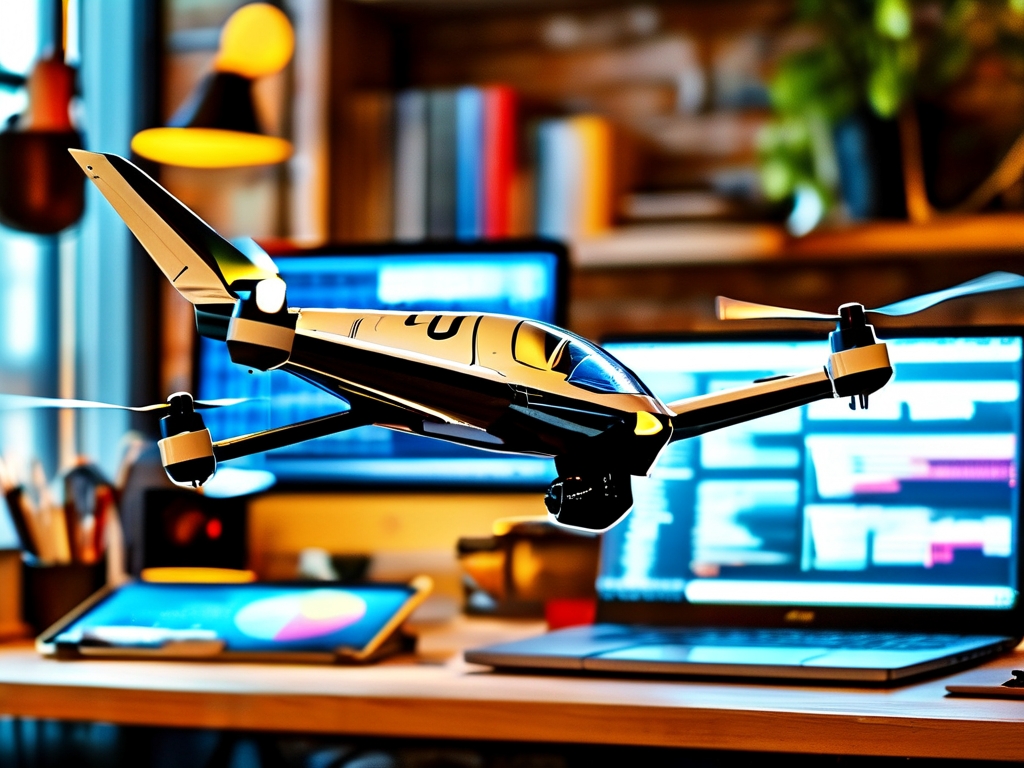The field of aerospace engineering has witnessed a paradigm shift in recent years, driven by advancements in unmanned aerial vehicles (UAVs), urban air mobility (UAM), and autonomous flight systems. Within this landscape, flight control algorithm engineers—specialists who design and optimize the software governing aircraft stability, navigation, and safety—have become indispensable. However, an emerging trend is reshaping their professional trajectories: the rise of side hustles or freelance projects. This article explores why flight control algorithm engineers are increasingly taking on private contracts, the opportunities this trend unlocks, and the challenges they must navigate.

1. The Growing Demand for Specialized Expertise
Flight control algorithms sit at the heart of modern aviation systems. Whether it’s ensuring a drone avoids obstacles in real time or enabling an eVTOL (electric vertical takeoff and landing) aircraft to transition seamlessly between flight modes, these algorithms require precision, adaptability, and rigorous testing. Large aerospace corporations and startups alike often face resource constraints, creating a gap that freelance engineers can fill.
For example, a startup developing delivery drones might lack the in-house expertise to refine its control logic for complex urban environments. By hiring a freelance flight control algorithm engineer, the company gains access to specialized skills without the long-term commitment of a full-time hire. Similarly, established firms may outsource niche projects—such as retrofitting legacy aircraft with AI-driven autopilot systems—to external experts.
2. Why Engineers Pursue Side Hustles
Flight control algorithm engineers are uniquely positioned to thrive in the gig economy. Their work is highly technical, project-based, and often platform-agnostic. Many engineers are drawn to freelance opportunities for reasons such as:
- Financial Incentives: Private contracts frequently offer higher hourly rates compared to salaried roles, especially for short-term or high-stakes projects.
- Intellectual Freedom: Side projects allow engineers to experiment with cutting-edge technologies (e.g., reinforcement learning for adaptive control) that their primary employers may not prioritize.
- Portfolio Diversification: Freelancing enables professionals to work across industries—from defense contracts to agricultural drones—enhancing their resumes and technical versatility.
A case in point is Dr. Anna Lee, a former aerospace company employee who now balances her full-time role with freelance projects. “My side hustles let me tackle problems I’m passionate about, like swarm robotics for disaster response,” she explains. “It’s rewarding to see my algorithms deployed in real-world scenarios beyond my day job.”
3. Challenges in Freelance Flight Control Work
Despite its appeal, freelance engineering in this domain is not without hurdles:
- Regulatory Compliance: Aviation authorities like the FAA and EASA impose strict certification requirements. Engineers must ensure their algorithms meet safety standards, which can complicate freelance workflows.
- Intellectual Property (IP) Conflicts: Ownership of code and algorithms is often a sticking point in contracts. Clear agreements are essential to avoid disputes.
- Resource Limitations: Unlike corporate teams, freelancers rarely have access to advanced simulation tools or flight-testing facilities, forcing them to rely on open-source software or client-provided infrastructure.
Moreover, the pressure to deliver flawless systems under tight deadlines can be intense. A single error in a control algorithm might lead to catastrophic failures, underscoring the need for meticulous testing—a process that freelance engineers must manage independently.
4. Navigating the Freelance Market
To succeed as a freelance flight control algorithm engineer, professionals must adopt strategic practices:
- Building a Niche Brand: Specializing in areas like fault-tolerant control or machine learning integration helps attract high-value clients.
- Leveraging Platforms: Websites like Upwork and Toptal are popular, but industry-specific networks (e.g., aviation-focused LinkedIn groups) often yield better opportunities.
- Collaborating with Test Pilots and Simulation Experts: Partnerships can mitigate resource gaps and enhance project credibility.
Additionally, continuous learning is critical. As UAV regulations evolve and new control paradigms (e.g., quantum-inspired optimization) emerge, staying ahead of trends ensures relevance in a competitive market.
5. Ethical and Safety Considerations
The freelance model raises ethical questions, particularly when engineers work on dual-use technologies (e.g., military drones). Professionals must weigh financial gains against potential misuse of their work. Transparency with clients about intended applications and adherence to ethical guidelines—such as those proposed by the AIAA (American Institute of Aeronautics and Astronautics)—can help mitigate risks.
Safety remains paramount. Unlike software development in less critical industries, flight control algorithms demand zero tolerance for bugs. Freelancers should advocate for comprehensive testing phases, even if it means pushing back against unrealistic client timelines.
The rise of side hustles among flight control algorithm engineers reflects broader shifts in the tech workforce: a move toward flexibility, specialization, and entrepreneurialism. While the opportunities are vast—from innovating in emerging markets to commanding premium rates—the challenges require careful navigation. By combining technical excellence with business acumen and ethical rigor, engineers can thrive in this dynamic landscape, shaping the future of aviation one algorithm at a time.
As the industry continues to evolve, the line between full-time employment and freelance work may blur further. For flight control algorithm engineers, the sky is no longer the limit—it’s just the beginning.

